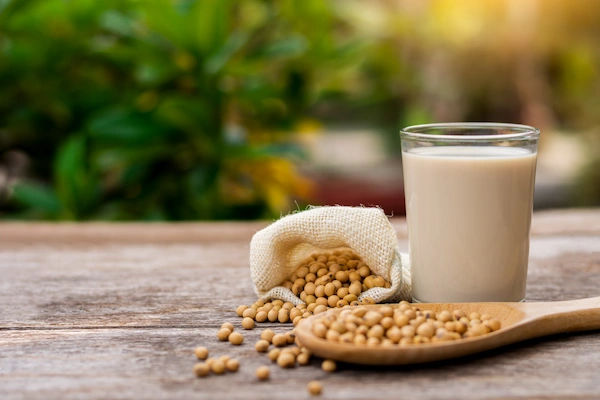Breast Pumping Guide for New Mums: Tips, Benefits, and FAQs
A friendly new mothers’ guide to breast pumping: when to start, how to pump, storage safety, gear, tips, and FAQs from trusted health sources.


Introduction
For many families, breast pumping offers flexibility, comfort, and a way to provide breast milk when direct nursing isn’t possible. This guide explains breast pumping basics in simple, trustworthy terms - when to start, how to pump comfortably, how to store milk safely, and how to troubleshoot common issues. You’ll also find clear answers to frequently asked questions, with guidance informed by reputable sources such as the World Health Organization (WHO), the Centres for Disease Control and Prevention (CDC), Mayo Clinic, and Cleveland Clinic.
Why Breast Pumping Matters: Key Benefits for You and Your Baby
Here are the key beenfits for you:
- Supports breastfeeding goals: Pumping helps maintain milk supply when you’re away from your baby or when latch is challenging.
- Flexibility for your schedule: It allows others to feed your baby expressed milk, giving you rest or time to work, recover, or run errands.
- Comfort and health: Pumping can relieve engorgement and help prevent clogged ducts by removing milk frequently and effectively.
- NICU or medical situations: If your baby is premature or hospitalised, pumping ensures your milk is available even if direct breastfeeding isn’t possible.
- Feeding choice: Some parents choose to exclusively pump and can successfully provide breast milk with the right routine and support.
A New Mothers’ Guide to Starting Breast Pumping
Here’s a guide to start breast pumping:
When to Begin
- If breastfeeding is going well: Many families start pumping around 3–4 weeks to build a small freezer stash before returning to work or to introduce an occasional bottle.
- If baby isn’t nursing effectively or you’re separated: Start pumping within the first few hours after birth and continue frequently to establish supply.
- If you plan to exclusively pump: Aim for a schedule that mimics newborn feeding, especially in the first weeks.
How Often to Pump
- To establish and maintain supply: Most newborns feed 8–12 times in 24 hours. If exclusively pumping, try for a similar frequency, including at least one overnight session in the early weeks.
- Session length: Many people pump for about 15–20 minutes, or 2–5 minutes after milk flow stops.
- Double pumping (both breasts at once) helps save time and can increase output.
Choosing a Breast Pump and Helpful Accessories
Here’s how to choose a breast pump:
Pump Types
- Hospital-grade rental: Strong, efficient option to establish supply, especially if the baby is preterm or not latching.
- Double electric pump: Good for regular pumping at home or work; efficient and widely used.
- Wearable or hands-free pumps: Convenient and discreet for on-the-go use; output can vary by person and model.
- Manual pump or hand expression: Useful for occasional pumping, relieving engorgement, or collecting let-down.
Accessories That Make Pumping Easier
- Correctly sized flanges (breast shields)
- Extra valves, membranes, and tubing (replace worn parts as recommended by the manufacturer)
- Milk storage bags or food-grade containers with tight lids
- Pumping bra for hands-free sessions
- Cooler with ice packs for transporting milk
- Cleaning supplies: a basin and brush reserved for infant feeding items, dish soap, and a drying rack
Breast Pumping Tips for Comfort and Results
Here are some breast pumping tips:
Create a Calm Setup
- Wash your hands and set up on a clean surface.
- Sit comfortably, relax your shoulders, and try gentle breast massage for a minute or two before pumping. Warmth can help let-down.
- Most electric pumps have a “stimulation/let-down” mode. Start there, then switch to expression mode.
Find Your Comfortable Settings
Suction should never hurt. Use the highest level that feels comfortable, not painful.
If you feel nipple rubbing, pinching, or blanching, reassess flange size and suction.
Use Hands-On Techniques
Gentle massage and breast compressions during pumping can help milk flow and increase output.
Briefly shake or jiggle the breast before or between let-downs to encourage flow.
Protect Your Nipples and Skin
- Apply a small amount of food-safe, pump-safe lubricant (like a drop of breast milk) to the flange tunnel to reduce friction.
- Allow nipples to air-dry after pumping; use breathable nursing pads if needed.
Flange Fit and Suction: Prevent Pain and Protect Supply
Here’s how to prevent pain and protect supply:
Why Flange Fit Matters
A properly fitted flange helps remove milk effectively without pain. Poor fit can cause nipple damage, low output, or swelling.
Signs Your Flange May Be Too Small
- Painful rubbing, pinching, or blanching (whitening) of the nipple
- Nipple can’t move freely in the tunnel
Signs It May Be Too Large
- Excess areola being pulled into the tunnel
- Nipple swelling during or after pumping
- Milk sprays stop and start despite adequate suction
How to Size
- Measure your nipple diameter (not including the areola) after a pumping or feeding session when the nipple is more extended.
- Many people do best with a flange a few millimetres larger than their measured nipple diameter.
- Check your pump manufacturer’s sizing guide for brand-specific options.
Consult Top Specialists
Safe Breast Milk Handling and Storage
Here’s how you can store and handle pumped breast milk:
- Follow Evidence-Based Storage Times (Per CDC Guidance)
- Room temperature (up to 25°C): Up to 4 hours
- Refrigerator (4°C): Up to 4 days
- Freezer: Best within 6 months; acceptable up to 12 months
- Insulated cooler with frozen ice packs: Up to 24 hours; then use right away or move to fridge/freezer
Key Rules for Safety
- Collect milk in clean, food-grade containers with tight lids or in breast milk storage bags.
- Label with date and time; use the oldest milk first.
- Cool freshly pumped milk in the refrigerator before combining it with already chilled milk. Do not add warm milk to frozen milk.
- Thaw in the refrigerator overnight or under cool running water, then warm gently in a bowl of warm water. Never microwave breast milk.
- Once thawed, keep in the refrigerator up to 24 hours. Do not refreeze thawed milk.
- After a feeding begins, use the milk within 2 hours; discard any leftovers from the bottle.
Cleaning and Sanitising Pump Parts (CDC Recommendations)
- After every pumping session: Disassemble, rinse, and wash all parts that touch milk using soap and hot water or a dishwasher. Use a clean brush and a basin reserved only for infant feeding items. Air-dry completely on a clean surface.
- Sanitise at least daily if your baby is under 3 months, was born prematurely, or has a weakened immune system. Boiling, steam bags, or a sanitising cycle can be used as directed.
- Wash hands before handling clean parts; store them in a clean, covered container.
Building a Freezer Stash and Returning to Work
Here’s how you can store milk and plan accordingly:
Start Small and Steady
- Pump once daily (often after the morning feed) to add a few ounces to your stash without stressing your body.
- Freeze milk in small portions (2–4 ounces) to reduce waste and make thawing flexible.
Practise the Bottle
- Introduce a bottle once breastfeeding is established, typically around 3–4 weeks, if that aligns with your feeding plan.
- Use a paced bottle-feeding method to help your baby learn to control flow.
Planning for Work or School
- Aim to pump about as often as your baby eats - commonly every 2–3 hours.
- Bring a double electric pump, spare parts, storage bags or containers, a cooler with ice packs, and cleaning supplies.
- Store milk promptly in a refrigerator or cooler with ice packs.
Troubleshooting Common Pumping Challenges
Here are some common pumping challenges:
Low Output or Supply Concerns
- Pump more often: Extra sessions (even short ones) usually help more than pumping longer at the same frequency.
- Try “power pumping” once a day for about an hour (for example: pump 20 minutes, rest 10, pump 10, rest 10, pump 10) to mimic cluster feeding.
- Ensure proper flange fit and comfortable suction.
- Consider hands-on pumping and gentle breast massage.
- Stay hydrated, eat balanced meals, and rest when possible.
- If you’re worried about supply, ask a lactation consultant or healthcare professional for personalised guidance.
Painful Pumping, Nipple Damage, or Discomfort
- Re-check flange size and reduce suction.
- Use brief warmth before pumping and cool compresses after if sore.
- Apply a small amount of expressed milk to nipples and let air-dry. Seek care if you see cracks, bleeding, or signs of infection.
Clogged Ducts and Mastitis Warning Signs
- Clogged duct tips: Warm compress, gentle massage toward the nipple, frequent milk removal, and rest.
- Mastitis symptoms can include a tender, red, or warm area on the breast, fever, and flu-like feelings. If you suspect mastitis or symptoms persist or worsen, contact your healthcare provider promptly.
Exclusive Pumping Tips
Here are some pimping tips for new moms:
- Aim for 8–12 sessions per 24 hours in the early weeks, including overnight.
- Keep a simple log of pumping times and volumes to spot patterns.
- Replace worn pump parts per manufacturer guidance; worn valves and membranes can reduce output.
- Seek support - from a certified lactation consultant, peer groups, or your healthcare team.
Lifestyle Tips: Pumping on the Go and at Night
- On the go: Use an insulated cooler with frozen ice packs and clean storage containers. Consider a portable or wearable pump for convenience.
- Night-time: Many parents find an overnight session helpful for supply in the early months; keep a simple setup at your bedside to make it easier.
- Self-care: Try to rest when you can, nourish your body, and ask for help with chores. Your wellbeing supports consistent milk production.
Conclusion
Feeding your baby is a journey, and every family’s path looks a bit different. With the right information, tools, and support, breast pumping can be comfortable, efficient, and aligned with your goals. If you have medical concerns or persistent challenges, reach out to a lactation consultant or your healthcare provider—you don’t have to do this alone.
Consult Top Specialists
Consult Top Specialists

Dr. Saheli Kapat
Obstetrician and Gynaecologist
11 Years • MBBS, DNB Obstetrics & Gynaecology,FMAS(Fellowship in Minimal access surgery)
Kolkata
MCR SUPER SPECIALITY POLY CLINIC & PATHOLOGY, Kolkata

Dr. Sanjan Das
Obstetrician and Gynaecologist
15 Years • MBBS,MS
Bengaluru
Apollo Clinic, Sarjapur Road, Bengaluru

Dr. Sangeetha M
Obstetrician and Gynaecologist
21 Years • MBBS, MS ( Obstetrics & Gynaecology )
Bansdroni
Siddhita Healthcare., Bansdroni

Dr. Sreeparna Roy
Obstetrician and Gynaecologist
8 Years • MBBS , MS (OBSTETRICS & GYNAECOLOGY), Fellowship in Infertility, Endoscopy & Ultrasonography), Fellowship in Laparoscopy & Hysteroscopy,DRM
Barasat
Diab-Eat-Ease, Barasat

Dr. Mehnaz Rashid
Obstetrician and Gynaecologist
7 Years • MBBS, DNB (Obstetrics & Gynaecology), D.MAS, F.MAS, WALS
Bengaluru
Wellstar Polyclinic and Diagnostic Center, Bengaluru
(250+ Patients)
Consult Top Specialists

Dr. Saheli Kapat
Obstetrician and Gynaecologist
11 Years • MBBS, DNB Obstetrics & Gynaecology,FMAS(Fellowship in Minimal access surgery)
Kolkata
MCR SUPER SPECIALITY POLY CLINIC & PATHOLOGY, Kolkata

Dr. Sanjan Das
Obstetrician and Gynaecologist
15 Years • MBBS,MS
Bengaluru
Apollo Clinic, Sarjapur Road, Bengaluru

Dr. Sangeetha M
Obstetrician and Gynaecologist
21 Years • MBBS, MS ( Obstetrics & Gynaecology )
Bansdroni
Siddhita Healthcare., Bansdroni

Dr. Sreeparna Roy
Obstetrician and Gynaecologist
8 Years • MBBS , MS (OBSTETRICS & GYNAECOLOGY), Fellowship in Infertility, Endoscopy & Ultrasonography), Fellowship in Laparoscopy & Hysteroscopy,DRM
Barasat
Diab-Eat-Ease, Barasat

Dr. Mehnaz Rashid
Obstetrician and Gynaecologist
7 Years • MBBS, DNB (Obstetrics & Gynaecology), D.MAS, F.MAS, WALS
Bengaluru
Wellstar Polyclinic and Diagnostic Center, Bengaluru
(250+ Patients)
More articles from General Medical Consultation
Frequently Asked Questions
How soon after birth can I start pumping?
If you and your baby are separated or baby isn’t latching well, you can start pumping within hours after birth to establish supply. If breastfeeding is going smoothly, many families wait 3–4 weeks before pumping to build a small stash.
How long can breast milk sit out at room temperature?
Freshly expressed milk can be kept at room temperature (up to 77°F/25°C) for up to 4 hours. Refrigerate or freeze as soon as possible if not used within that time.
Can I mix milk from different pumping sessions?
Yes—cool the freshly pumped milk in the fridge first, then combine it with already chilled milk. Avoid adding warm milk to frozen milk.
Does power pumping really help increase supply?
It can help some parents by mimicking a baby’s cluster feeding, which may stimulate more milk production. If it causes pain or stress, stop and try other strategies. If you’re concerned about supply, consult a lactation consultant or your healthcare provider.
Is it okay to exclusively pump instead of breastfeeding at the breast?
Yes. Many parents exclusively pump and provide all or most of their baby’s nutrition with expressed milk. A consistent schedule, correct flange fit, and good pump maintenance can make a big difference. Seek support early if you have questions.




